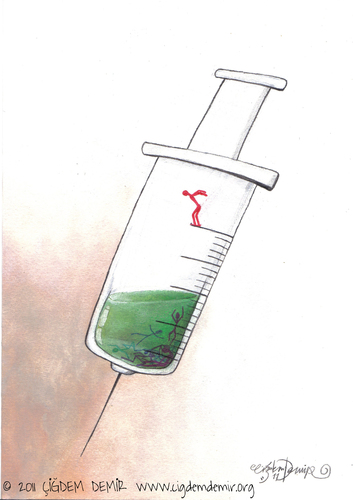
On the surface, cocaine and porn don’t seem to have a lot in common but studies are showing that viewing pornography tricks your brain into releasing the same pleasure chemicals that drugs do. What’s more is your brain actually begins to rewire itself because of this artificial stimulation. It may sound crazy, but it’s true.
On the surface, cocaine and porn don’t seem to have a lot in common. One is purchased in seedy alleyways; the other is free to download. One habit can get expensive pretty fast, while the other is about the price of a high-speed Internet connection.
So where’s the similarity? Inside the brain.
In case you’re not a neurosurgeon, here’s a crash course in how the brain works. Deep inside your brain, there’s something called a “reward pathway.” You’ve got one. Your cat’s got one. For mammals, it comes standard. The reward pathway’s job is to help keep you alive by doing exactly what its name promises: rewards you, or more specifically, rewards you when you do something that promotes life, such as eating food or achieving something you’ve worked hard for. And the way it rewards you is by releasing chemicals in your brain—mainly one called dopamine, but also others like oxytocin.
Normally, these chemicals are really handy. They help us feel pleasure and to bond with other people, and they motivate us to come back to important activities that make us happy. The problem is, the reward pathway can be hijacked.
The way substances like cocaine and opioids make users feel high is by triggering the reward pathway to release high levels of dopamine without making the user do any of the work to earn it. Want to guess what else does that? Porn.
And that surge of dopamine is causing more than just feelings. As it goes pulsing through the brain, dopamine helps to create new brain pathways that essentially lead the user back to the behavior that triggered the chemical release.
The more a drug user hits up or a porn user looks at porn, the more those pathways get wired into the brain, making it easier and easier for the person to turn back to using, whether they want to or not.
Over time, the constant overload of chemicals causes other brain changes as well. Just like a junkie will eventually require more and more of a drug to get a buzz or even just feel normal, porn users can quickly build up a tolerance as their brains adapt to the high levels of dopamine that porn releases. In other words, even though porn is still releasing dopamine into the brain, the user can’t feel its effects as much.
That’s because the brain is trying to protect itself from the overload of dopamine by getting rid of some of its chemical receptors, which act like tiny catcher’s mitts that receive the dopamine released. With fewer receptors, the brain thinks less dopamine is there and the user doesn’t feel as strong a reaction. As a result, many porn users have to find more porn, find it more often, or find a more extreme version—or all three—to generate even more dopamine to feel excited.
And once a porn user becomes accustomed to a brain pulsing with these chemicals, trying to cut back on the habit can lead to withdrawal symptoms, just like with drugs.
While people often think of porn as something that’s been around forever, today’s version of porn is a whole new ball game. Thanks to the Internet, porn now mixes the most powerful natural dopamine release the body can produce with a cocktail of other elements—endless novelty, shock, and surprise—all of which increase the dopamine surge. And because Internet porn offers an endless stream of variety, users can flip to a new image every time their high starts to fade, keeping dopamine levels elevated for hours.
FINAL WORD
It is as though we have devised a form of heroin … usable in the privacy of one’s own home and injected directly to the brain through the eyes.
BY Harshvardhan Singh.




19 Comments